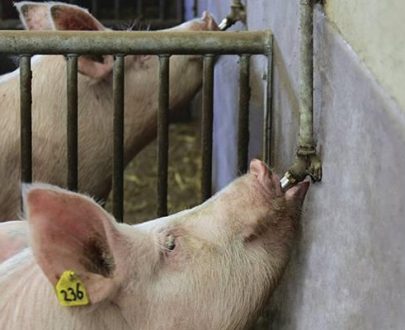Poultry Drinking Water Line Pipe Cleaning Tool
Poultry Drinking Water Line Cleaner tools are needed to get Clean, accessible water is essential for the health and well-being of your poultry flock. However, over time, mineral buildup, algae, and other debris can accumulate in poultry drinking water lines, compromising water quality and potentially impacting the health of your birds. To ensure clean and consistent water flow, regular cleaning of the water lines is crucial. This guide introduces you to Poultry Drinking Water Line Cleaner Tools, exploring their purpose, types, and how to use them effectively.
The Importance of Clean Drinking Water Lines
- Prevents health problems: Contaminated water can harbor bacteria and pathogens, leading to various health issues in poultry.
- Maintains water quality: Clean lines ensure that birds receive fresh, uncontaminated water, promoting their health and vitality.
- Reduces waterborne diseases: Regular cleaning helps prevent the spread of waterborne diseases within the flock.
- Improves water flow: Clogged lines can impede water flow, leading to uneven water distribution and potentially depriving some birds of adequate hydration.
Types of Poultry Drinking Water Line Pipe Cleaning Tools:
There are two primary types of Poultry Drinking Water Line Pipe Cleaning Tools:
1. Mechanical Cleaning Tools:
- Brushes: These are the most common type, featuring long, flexible brushes designed to scrub the inner walls of the pipe as they are pulled through. Brushes come in various sizes to accommodate different pipe diameters.
- Swabbers: These resemble long, thin sponges or foam rollers attached to a wire or cord. They effectively absorb and remove debris from the pipe walls.
- Pipe Cleaners: Similar to pipe cleaners used for household plumbing, these are flexible brushes with a spiral design that can maneuver through bends and curves in the water line.
2. Water-powered Cleaning Tools:
- Flushing Systems: These connect to the water supply and utilize the water pressure to flush out debris from the lines. They often come with attachments like brushes or sponges for more thorough cleaning.
- Automatic Cleaning Systems: These are advanced systems permanently installed on the water line and automatically clean the pipes at regular intervals using water pressure and sometimes cleaning solutions.
Choosing the Right Cleaning Tool:
The best tool for you will depend on:
- Pipe size: Ensure the chosen tool’s size is compatible with your water line diameter.
- Length of the water line: Consider the length of the line and choose a tool long enough to reach all sections.
- Level of buildup: For heavily clogged lines, a combination of a mechanical tool and a flushing system might be necessary.
- Ease of use: Choose a tool you find easy to handle and operate.
Using Poultry Drinking Water Line Pipe Cleaning Tools:
- Disconnect the water supply: Turn off the water valve and disconnect the line from the water source.
- Drain the water lines: Open the lowest point of the line to drain any remaining water.
- Choose the appropriate tool: Select the tool based on your needs and the factors mentioned above.
- Feed the tool through the line: Depending on the tool, you might need to attach it to a rope or wire for easier pulling through the pipe.
- Clean thoroughly: Push and pull the tool repeatedly through the entire length of the line several times to ensure proper cleaning.
- Flush the lines: After using the mechanical tool, connect a flushing system or manually flush the lines with clean water to remove any loosened debris.
- Sanitize the lines: Use a diluted sanitizing solution recommended for poultry water lines to disinfect the system.
- Reconnect the water supply: Once everything is clean and sanitized, reconnect the water line and turn on the water supply.
- Monitor the water flow: Check for any leaks and ensure that the water flows freely and evenly throughout the line.
Additional Tips:
- Clean water lines regularly: Depending on the water quality and mineral content, cleaning might be required weekly, monthly, or quarterly.
- Inspect the water lines regularly: Look for signs of leaks, damage, or excessive buildup that might require additional cleaning or repairs.
- Use clean water and avoid harsh chemicals: Always use clean water for flushing and disinfect with poultry-safe sanitizers to avoid harming your birds.
- Dispose of cleaning tools and materials properly: Follow local regulations for disposing of used cleaning tools and any contaminated materials.
Conclusion:
Poultry Drinking Water Line Pipe Cleaning Tools are essential for maintaining clean and healthy drinking water for your flock. By understanding the types of tools, choosing the right one for your needs, and following proper cleaning and maintenance procedures, you can ensure that your birds have access to clean, fresh water, promoting their health and well-being. Remember, regular cleaning and proper maintenance are key to preventing waterborne diseases and keeping your poultry flock thriving.










Customer reviews
Reviews
There are no reviews yet.
Only logged in customers who have purchased this product may leave a review.